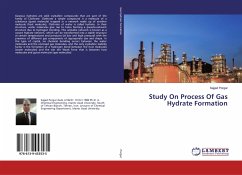The history of gas hydrates can be traced back to Humphry Davy, a chemist from Cornwall, England, who identified chlorine as an element in 1810. Davy and his assistant, Michael Faraday, continued to work with chlorine throughout the early 1800s, mixing the green gas with water and cooling the mixture to low temperatures. Once scientists began looking for methane hydrate deposits, they weren't disappointed. They found them beneath Arctic permafrost and beneath the seafloor, especially in areas where one tectonic plate slides over another. These regions are known as subduction zones because the edge of one plate moves beneath another. For example, off the coast of Washington and Oregon, the Juan de Fuca plate is sliding underneath the North American plate. Like a piece of wood being drawn across the blade of a plane, the sediments, including hydrates, of the Juan de Fuca plate are removed by the rocky crust of the North American plate. This creates a ridge of hydrates that runs parallel to the coast. Hydrate deposits have also been found in regions where large ocean currents meet. Blake Ridge is a formation located off the coast of South Carolina, in water to max 15,748 feet deep
Bitte wählen Sie Ihr Anliegen aus.
Rechnungen
Retourenschein anfordern
Bestellstatus
Storno








